The Radford Story – My Childhood Days at Radford by Colin Stephenson
These are the memoirs of Colin Stephenson and his sister Sheila Coaker who were brought up living in Radford Castle. Colin was seventy seven when he wrote these words, he has now sadly passed on.
THE CASTLE
My early childhood was spent in what I consider were memorable years.
My earliest memories of Radford Castle are taken from the time when my parents moved in as Tenants and Gatekeeper in 1931 when I was about eighteen months ‘ old, along with my ten year old half- sister Edna and half-brother Roy aged twelve. Their mother had died at the age of thirty two and my father was a widower when he married my mother.
It was during the time of the depression in the early 1930’s. My father had just left the Royal Navy and was unemployed – life was difficult and hard in those days. My father eventually managed to get a part- time job as a Postman at Stadiscombe . Every morning he would take his bike and go up through the woods to the top of Staddon Heights and then walk into Stadiscombe to collect and deliver the post . He would arrive home at about 1 o ‘ clock in the lunch hour. Shortly afterwards he was offered a full-time position as Postman in the Plymstock area and served 20 years as Postman sorting and delivering mail in the Plymstock , Elburton , Oreston , Stadiscombe, Down Thomas and Wembury areas walking 30 miles a day – two deliveries a day! He often arrived home with fresh mushrooms having picked a few walking through the fields.
The Rent at the Castle was five shillings a week (25p). There was no Gas or Electricity within the Castle. Oil lamps and candles were used to provide all our lighting, together with a lantern for outside use on dark lonely nights.
Water was supplied by means of a tap just outside the main door. Mum used to do all her cooking on an open range using coal, coke and wood. She had a laborious task of polishing the range with a substance known as ‘black lead.’
Bathing was carried out in a large galvanised bath placed in front of the warm open range.
The WC was housed in the washhouse outside the Castle. Mum used to wash all the laundry in a copper boiler lit underneath with sticks, coal and coke. Clothes would then pass through the hand wringer and placed on lines in the Copse – the clothes being whiter than white 1 may add!
The Castle had three bedrooms and we would wind our way up the spiral stairway sometimes in the dark or by means of a candle or oil lamp. All the flooring was built of concrete and stone. Stone hot water bottles were used on cold winter nights.
The Castle is small but sturdy, built of local stone from the Quarry – a squared block with round turrets and a gateway for the route that runs across the Dam. Radford Castle is an early 19th Century Folly. At the present time Radford Lake is fresh water while Hooe Lake, an inlet of the Cattewater is salt (the Dam separates the two).
In the Copse father kept Geese, Duck and Chicken and was kept busy preparing for the Festive Season at Christmas time. Local folk would arrive to collect their free range Christmas poultry which I am sure they thoroughly enjoyed.
I recall my mother making home-made jams and preserves.
During the summer months friends from Embankment Road Methodist Church would visit us when Mum would prepare tea and home-made cakes for them which they thoroughly enjoyed in such tranquil and picturesque setting in the Castle grounds overlooking the Lake.
The mode of transport in those days were somewhat limited. Not many folks owned cars. The Public, therefore, would use the train travelling from Friary Station to Oreston and Turnshaple, or the Oreston/Turnchapel Steamboat Ferry (owned by the Elford family) travelling from the Barbican – Oreston. Cycles, motor bikes and side cars were most frequently used, and not forgetting, that in those days people would walk miles.
Sheila, my sister was born in the Castle. I was five years of age when I commenced school at Oreston. Mum could not take me to school on my first day as Sheila was only eight months’ old and there had to be someone at the Gatehouse at all times. This formed part of the Tenancy Agreement.
Living at Radford Castle as a small boy was rather a lonely life in that no one ever came down there from the school as most of the children lived in the village of Oreston which was quite a little way away.
In order to amuse myself, I would walk across the meadow (which is where the ex-sewerage works was built) and walk over to Hexton Quay. There is a tunnel which takes you under Hexton Hill and out on what was a sort of open quarry. They could not get the stone out by road so they built a tunnel, and a horse and cart would go through the tunnel, pick up the stone and bring it out at the Queyside by the Castle. Boats were used to take the stones away.
During the War and the bombing a great number of residents in the Oreston / Hooe area used the tunnel as an air-raid shelter. The tunnel was not very high – it is all sealed up at the present time.
Around about 1943-1944 just about the end of the War you could still walk through the tunnel. I well recall a group of us went through the tunnel in 1946 just after the War.
Radford caves are up above which I believe Plymouth Caving Club used. As a small boy I used to visit the caves, but would not venture in very far – I did not like underground places even as a boy.
The foreshore edge of the Lake against the woods (approached by the Castle entrance) was occupied by House Boats – a sort of modern day caravan site. People used them for weekends or holidays, a few were occupied permanently, two of which come to mind – a Mr and Mrs Couch and their son Billy who was slightly older than me and also a Mr McAvett who was an Irish Bachelor. He had two boats – one he lived in and a yacht called “The Gipsey”. He taught Billy and myselfto row a boat when I was about five and Billy six.
Mr McAvett came across to the Castle for water every other day and if we were there we would row him back having an oar apiece.
Another House Boat owner/occupier was a Mr Stennaford. His father was blind and lived in Plymouth, but his blindness did not stop him from coming out to visit his son on the House Boat and spend the day there. He came out on the train from Friary – Oreston and walked down to the Castle carrying a small brown attaché – case. I was playing outside the Castle on this particular day on my three- wheel bike (I could only have been about four) but I can remember it as if it was yesterday. Being blind, he followed the sound of the bike and I sort of rode out to the edge of the wall by the water’s edge and back again, and he was following me. Of course, I did not realise this and he went straight on. I turned and came back, but ne went straight on and fell out over and landed on the first piece of quay. At that time, Mum ran over to the Quarry to get some men to help him up. He was shook up a bit, but was alright. Mum gave him a sip of brandy (which was kept for medicinal use only I might add.)
I can also recall an occasion when an elderly lady was cast adrift in the Lake because the boatman who towed her from Newton Ferrers wanted more money, and she refused to pay him any more, so he just let her go adrift , and of course, the boat eventually ran up on the mud bank. My father and Edgar Ford walked across the mud and Edgar carried me on his shoulders (I was only about four). Edgar offered to carry this elderly lady back over towards Holland’s field, but she declined the offer and preferred to wait until the next tide when we went out in a boat and towed her in and moored the boat up on the foreshore.
Father would take me over to Radford Farm to collect the milk. An enamel can was used for this purpose. The hind who did the milking was called Edgar Ford – he lived at Turnchapel. He always gave me a drink of milk straight from the cow, and I used the top of the can to drink it.
RADFORD HOUSE
I well remember going over to Radford House to play (which was almost a ruin) my task was to unblock the water pipe which carried the water to the Castle. There was a well and I would take the ton slab off and unchoke the end of the pipe which had duck weed around it. In the grounds they had some lovely ornamental ponds all built in granite. I can well remember going over there catching frogs and tadpoles and playing in the grounds.
The Mansion was demolished in 1937 and at the present time is surrounded by 20th Century Housing. The Castle and the Park was purchased by Plymouth City Council. Radford Park is now a beautiful Public open space.
RADFORD LODGE
My Cousin Gordon Miller converted Radford Lodge which was uninhabitable for many years. Being a Listed Building a great deal of thought and care had to be given in carrying out all internal and external work to meet all building regulations.
Gordon has resided at Radford Lodge for over twenty four years. He is to be congratulated as all the work was carried out by himself. One can only describe the sterling workmanship as a craftsman in wood rarely seen in this modern age.
All our childhood days were happily spent at Radford – swimming, walking, cycling, and climbing up the rubble banks. We enjoyed many a picnic – all the children from Broad Parks would make their way to Radford. Everywhere was safe to roam in those days!
During the War many children were fortunate enough to enjoy their fathers at home either working in HM Dockyard or with British Rail. Nevertheless they all played their part in the Home Guard.
My father was away for the whole of the War years. He served thirty-two years in the Royal Navy having served in two World Wars as Chief Petty Officer (Gunnery Instructor).
Roy, my half-brother volunteered and joined the Royal Navy in 1939. He was killed on HMS Illustrious outside Malta on 10 January, 1941 at the age of 20.
My father purchased Elverdinghe, Broad Parks in 1937 when we vacated the Castle. George Holland, the local Greengrocer placed all our furniture in his horse and cart as we did not have any means of transport.
Now at the age of seventy seven years I felt inclined to write a few words of my happy childhood days at Radford.
These notes were passed to hooelake.org by Gordon Miller, we have scanned them and re-presented them here for posterity. If you have any similar stories, pictures or accounts please let us know. If you wish to add any notes or comment on this story then please do so below.
Category: History, Personal Accounts
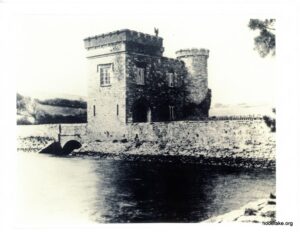
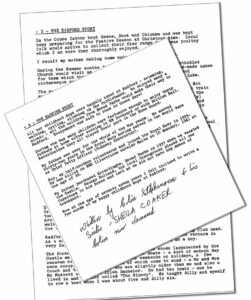




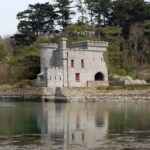
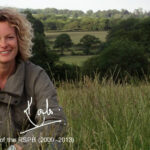
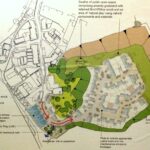
Hi James, Yes it is. I’ll send Gordon your email.
I wonder if the Gordon Miller mentioned in the story is the same Gordon Miller I met in 2021 when visiting Radford Park. He lived in the gatehouse and told us stories about living on the property and growing up with someone who lived in the castle. If so, I’ve written him but was not able to establish a connection.
And you’ve carried that guilt for all these years! Lovely story, thank you for contributing.
I lived at Church Hill in Hooe. As a child I used to wander freely the village, the Castle on the lake being as far as we were allowed to venture. This would have been in the 1950’s. There was, to my young eyes, an old lady lived there and my friend and I would run underneath shouting ‘”witch, witch, witch” sometimes you could run through, othertimes it was gated. If we were lucky she would shake her fist at us from an upper window and we would run home fast!!! I think I its time to apologise to anyone who might remember or have known of those two naughty little girls!
I have lived in the higher Hooe area from 1957 and remember the Radford Estate wall where the entrance to Reddicliff Estate is now, I am looking at the history and the estate of the Radford House as I am wondering if any one remembers a back path behind the houses on hooe road built in 1925/28 to the west of Homer Park Hill ,some people remember one being there which has now disappeared and some of the gardens seem to have got longer. I wonder at what time this may have happened as I have seen a back path in the Radford history book I have seen in the library. Also the field there is called Homer Flood is this due to a catchement for water for the old Radford House water tanks sited over the wall where the entrance to Reddicliff now is as could it have been a feed for the greenhouses in the estate and water supply before SWWB supplied it. I would be interested if anybody has any information on this. Thanks…
Hi Teresa, thankyou for your comments & interesting account of that time.
I wonder whether the Mrs.Moore you mentioned was connected to or related to the owners of the Hooe Quarry at that time? See Post http://www.hooelake.org/2011/11/hooe-quarry-f-j-moore/
Hi, I have been reading the article about the history of Radford Castle written by Colin, sharing some amazing insight to memories of his childhood in the surrounding area of Hexton Hill and Hexton Quay. I was sharing this with a friend called Ann, who informed me that as a child she lived on one of the houseboats, she shared some lovely memories of her life at that time, and I thought it would be lovely to share them with you, as there might be people who would also relate and maybe know Ann too. Ann lived on a houseboat called Nicki 2 with her parents Beryl and Tom Barter and there other two children. They later moved to a bigger houseboat called the Leader. She remembers playing as a child with Nina and Ricki Edgington who also lived there. There was a Mrs.Moore who she thinks came down for breaks from London. Lucy and Ted Bedford was another family she remembers. A Mr and Mrs Couch. she thinks they went there about 1948. she remembers a very posh house boat that belong to a Major Peter, that’s what they called him! There was also a Mrs. Blackmore.
Ann’s mother who was a nurse recalls the rushing around one day when she was called one day into one of the houseboats to deliver a baby. Ann says she remembers as a child playing around the castle and the mud banks with great fun times and the community spirit. she remembers a Mrs Hatch who lived in the castle and in the summer she would move into a caravan.
It would be amazing if someone could come forward with other memories of the houseboat community at that time, if anyone has any photos of the houseboats at that time it would be lovely to be able to show my friend as she says she has no photos of that time of the boats.
I hope some of these memories will enlighten other readers out there.
This is an excellent story i much enjoyed reading.
The tunnel he is talking about goes from what Hexton Quay through to the Quarry which is known as Fanshaw Quarry later accesable via Broomfield way.
There is a Quarry in there but the entrance the Quarry end is blocked in a believe .
My Uncle George had a pigeon loft in the quarry for many a year on the lake side, and I spent many a time over there with him as my Grandad kept pigeons, yes, there were still the signs of where it was filled in at a later date! I dont know if you can still get down there now! but that is where all the old allotments were at the time!
I lived on Hexton Hill for many years and was also surprised to hear about the tunnel under it. I remember as a child playing near Hexton Quay and the quarry, there is an archway that was barred by big iron gates, I wonder if this was the entrance/exit as this would fit with transporting the stone, I have no idea where the other end would come out. I continue my investigations ……
What a great first-person piece of writing on what it was like growing up on Radford! It’s a treasure trove of information. Thank you for the post.
I found the account of Colin Stephensons childhood at Radford very interesting and it is great to get some first hand information on a time now gone.
I wonder if Colin would have remembered the homeguard parading outside the castle in the early 1940’s.
One aspect of his narative is his mention of a tunnel going under Hexton Hill and arriving at Hexton Quay. As this was big enough to take a horse and cart I would be facinated to know where the original entrance/exit is? Does anyone know.
Several years ago I wrote a short history of Radford and what a bonus it would have been to speak to Colin at that time . Unfortunately, I did’nt have the chance but I’m pleased that his story has been told on this webpage